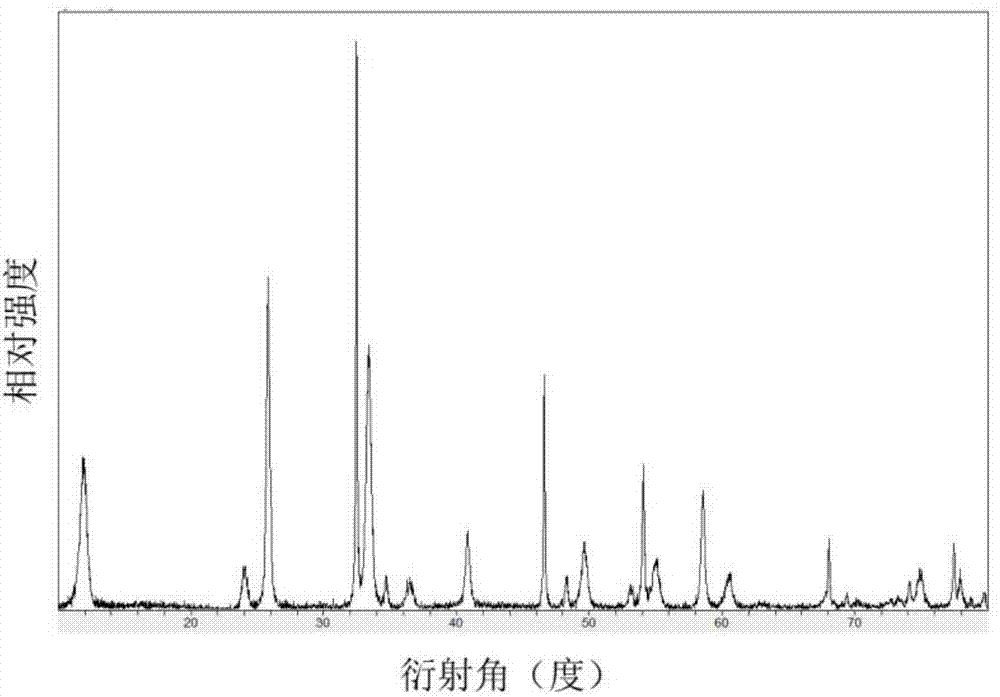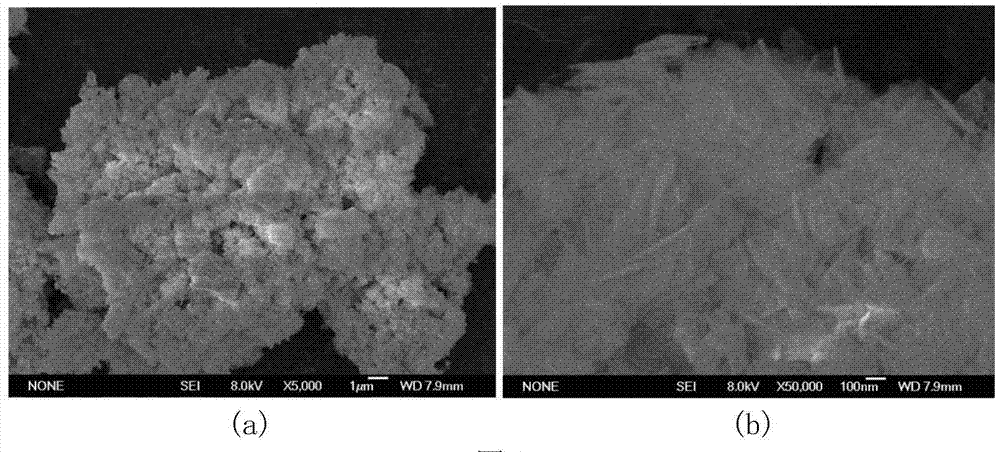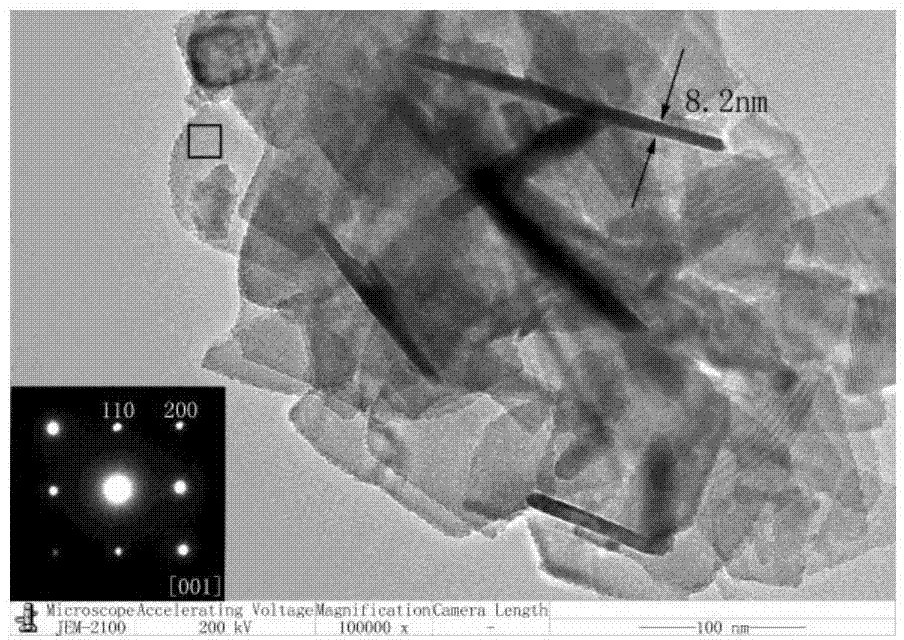BiOCl photocatalyst with cotton-shaped structure and preparation method thereof
A photocatalyst and cotton technology, applied in chemical instruments and methods, physical/chemical process catalysts, bismuth compounds, etc., can solve problems such as the inability to decompose methyl orange dye wastewater, and achieve low cost, excellent adsorption performance, and large specific surface area Effect
- Summary
- Abstract
- Description
- Claims
- Application Information
AI Technical Summary
Problems solved by technology
Method used
Image
Examples
Embodiment 1
[0021] The BiOCl photocatalyst involved in this embodiment has a cotton-like structure formed by stacking ultra-thin nano-sheets, the lateral size of the ultra-thin nano-sheets is 50-500 nm, and the thickness size is 2-12 nm.
[0022] The BiOCl photocatalyst involved in the present embodiment carries out phase identification by X-ray powder diffractometer (model Rigaku D-max-γA, manufacturer Nippon Electronics Co., Ltd.) (such as figure 1 shown), calibrated as a tetragonal BiOCl photocatalyst (JCPDS No.06-0249), the lattice constant is No miscellaneous peaks were found in the spectrum, indicating that the phase of the reaction product was pure without any miscellaneous phase; the peak shape was sharp, indicating that the reaction product was crystallized well.
[0023] The BiOCl photocatalyst application scanning electron microscope (SEM) that the present embodiment relates to observes its basic shape and can know (such as figure 2 Shown in (a), the BiOCl photocatalyst samp...
Embodiment 2
[0030] In this example, the optical performance test of the BiOCl photocatalyst prepared by the preparation method of the BiOCl photocatalyst described in Example 1 was carried out, and it was proved that its absorption wavelength was up to 370 nm.
[0031] Adopt ultraviolet-visible diffuse reflection spectrometer (model Lambda35, producer U.S. Perkin Elemr company) to test in the present embodiment, obtain the ultraviolet-visible diffuse reflection absorption spectrum of BiOCl photocatalyst (such as Figure 5 shown), the absorption wavelength λg of the prepared BiOCl photocatalyst sample as can be seen from the spectrogram is 370nm, indicating that the excitation region of the sample is in the ultraviolet region (theoretically can not be excited by visible light); calculated by the formula Eg=1240 / λg Obtained, the forbidden band width Eg value of the prepared BiOCl photocatalyst sample is 3.35eV.
Embodiment 3
[0033] In this example, the photocatalytic activity of the BiOCl photocatalyst sample was evaluated by degrading methyl orange under visible light (wavelength λ>420nm), indicating that the BiOCl photocatalyst prepared by the present invention has good photocatalytic activity under visible light and can rapidly degrade methyl orange. Orange, the degradation rate is 91.5% / 180min.
[0034] The specific experimental process is:
[0035] (1) Configure BiOCl-methyl orange mixed solution
[0036] Dissolve 5mg of methyl orange powder in 500ml of distilled water, and ultrasonically treat it at an ultrasonic frequency of 40Khz for 30 minutes to fully dissolve it to obtain a methyl orange solution with a mass concentration of 10mg / L; measure 100ml of the methyl orange solution and place it in 250ml In the reactor, add 20-100mg prepared BiOCl photocatalyst powder simultaneously, obtain BiOCl-methyl orange mixed solution;
[0037] (2) Dark adsorption of methyl orange on BiOCl photocataly...
PUM
| Property | Measurement | Unit |
|---|---|---|
| size | aaaaa | aaaaa |
| size | aaaaa | aaaaa |
| decolorization rate | aaaaa | aaaaa |
Abstract
Description
Claims
Application Information
 Login to View More
Login to View More - R&D
- Intellectual Property
- Life Sciences
- Materials
- Tech Scout
- Unparalleled Data Quality
- Higher Quality Content
- 60% Fewer Hallucinations
Browse by: Latest US Patents, China's latest patents, Technical Efficacy Thesaurus, Application Domain, Technology Topic, Popular Technical Reports.
© 2025 PatSnap. All rights reserved.Legal|Privacy policy|Modern Slavery Act Transparency Statement|Sitemap|About US| Contact US: help@patsnap.com



